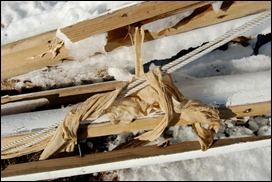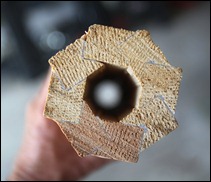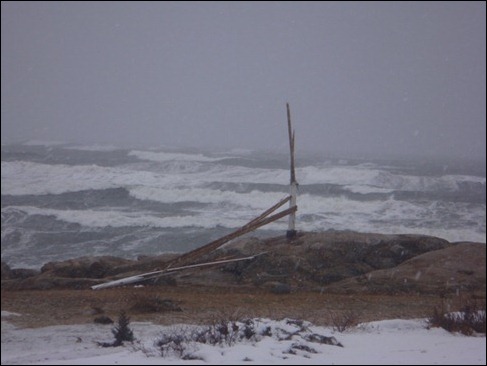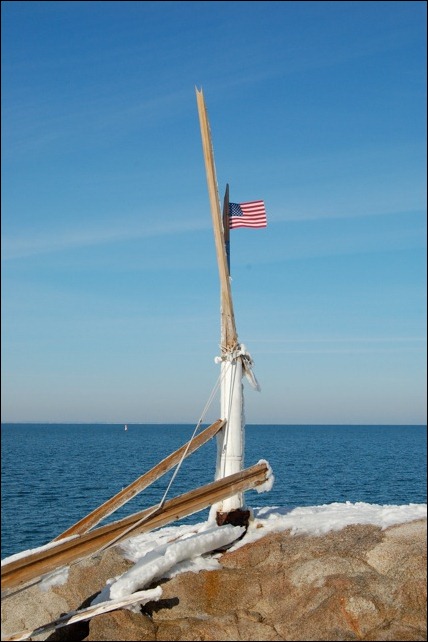Demasting! A century old mast comes down … onshore
Posted By RichC on January 3, 2011
A good friend, Clyde Witt (My Witt’s End), teased me with a few interesting and historical photos from the east coast over the holidays. His friend has a home on the shore which ‘had’ an old wooden mast used now to hoist a flag. It was ‘stepped’ securely in the rocky shoreline and has mark the family property for generations. It has stood through many strong nor’easter, but came splintering down in the recent New England snowstorm (brr, it just looks cold). While looking at the photos, several questions were asked about construction of the mast and oddities that may have been part of wooden spars from a century ago.


Splintered mast w/ “tackcloth” & a new photo showing how round spars are glued up
Clyde’s information was intriguing to me and since I know a little (very little) bit about wooden sailboats, thought I might be interested (both my Thistle and our first big boat in the 1980s had a Spruce mast and boom). Here’s the initial story:
She thinks the mast came from a ship that plied the waters around Rockport/Glouchester at least 100 years ago. She’s checking her family’s log books. What I find interesting is that the mast appears to be "manufactured" of several logs. There is a channel down the middle of the mast, meaning it was glued (?) then shaped into its round shape. I thought these things were trees, shaped into the mast configuration. The channel would reduce weight, but would it increase flexibility, somehow? And then there’s the issue of glue stiffening the whole thing.
I obviously have a lot to learn, so I think I’ll stick to birds and fishing, two subjects that I know enough about to be dangerous …
(Clyde’s an Audubon Editor, serious birder as well a fly fisherman)
In a follow-up email, he noted a few other oddities:
She sent me the attached interior picture. It reveals yet another mystery, some sort of fabric, she says it looks like cheese cloth, inside. What do you (the expert in all things sea worthy) think that’s all about? It also appears to have some nails and screws in it.
My reply, based on little more that what I know from maintaining wooden masts may be enough to stimulate the real experts into adding their two-cents? Here is my thinking: “Hmm … doesn’t look like any ‘seaworthy’ mast that I’ve ever seen as nails are frowned upon … but it is possible that "IF" there were internal halyards, the cheesecloth material (varnishing tack cloth most likely), it could have been used to silence any rattling (for external ‘slapping’ we usually bungee or tied halyards to the standing rigging – mast stays). As for the ‘cheesecloth,’ I’ve known some who attach an oil/grease rag and hoist it up an down inside a mast to protect the wood from internal rot.”
It would be interesting to have more conclusive answers, although I do suspect that the lack of maintenance may have lead to dry rot, which over time weakened the wood causing the collapse.


Comments